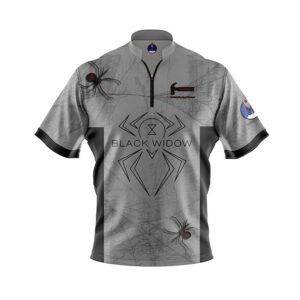Michael Cousins Bowling Blog
The Chicken Or the Egg? Bowling Balls Or Oils To Blame For Scoring
Who Is To Blame For Todays Oils And Conditions?
And just like that, it is Friday . . . again. So that means we are back with another installment of Flashback Friday. And, this week, we will be looking back at something that was brought up to me yesterday: old bowling balls.
I have a customer — a very good customer — that has a thing for vintage urethane/reactive bowling balls. I am talking some of the very earliest reactive balls — Turbo X, Excalibur, etc.
And we got onto the topic of why the older balls don’t perform like they used to perform.
The answer is pretty obvious, but it is also interesting to me.
Today’s patterns are obviously significantly longer than the ones from the past, and the oils are obviously thicker. So those older, harder, weaker covers just don’t perform the same; it is what it is.
Well the customer and I went on to talk about the USBC’s decision to hinder bowling ball development/performance (weight hole rule/oil absorption rate rule) and how, honestly, it is sort of ironic.
Have bowling balls continued to get stronger because oils have continued to get thicker? Or have oils gotten thicker because balls continue to get stronger? And, in the end, it is really the Chicken vs the Egg debate. But regardless of who is to blame, the one will not happen without the other.
If USBC started regulating pattern lengths, oils, etc, many of today’s balls would be far, far too strong, and honestly not look very good.
In other words, if you had this magic time machine and went back to the 1980s, bowling on a very short pattern with thinner oil, your old school urethane ball would likely look a lot better than your ultra high-end modern day resin ball you brought with you.
So it is easy to blame the balls for today’s inflated scores, and with just reason; they’re really, really good.
The Oil Patterns Are As Much To Blame As The Bowling Balls
But the conditions aren’t without blame. Today’s oils allow these balls to perform the way they perform. Just as today’s conditions don’t allow yesteryear’s balls perform.
Newsflash: when reactive first came out, those balls did crazy things. Throw one of them today and tell me how they roll. Not quite what you remember, right? But when they came out, they looked like Intense Fires (slight exaggeration). Now take your Intense Fire back to the early 90s and tell me how it looks . . . I’ll wait.
My point is this: old balls do look bad on today’s oils. 100%. But those same balls looked like cheat codes when they came out. Just like how today’s balls look on today’s conditions. And my problem is that I think people think that these balls of today are the biggest issue. And that if they had balls like this back in the day, they’d have averaged higher and bowled better. And that probably just isn’t the case. They wouldn’t match up on the conditions from that period. They just wouldn’t. But the reason this isn’t understood or accepted is because it isn’t possible to test out the theory. You cannot go back in time. The only thing you can do is throw older balls on today’s conditions. And of course they look bad, but I am telling you the same would happen in reverse. Balls have always been good. Balls have always gotten better generation to generation. But they have all been designed with the conditions of that period in mind. Just as today’s balls are designed with today’s conditions in mind.
I am going to end it with this. Something unrelated to bowling, but relatable in theory. The iPhone is considered a technological marvel, right? Truly a thing of amazement. It can do anything today right? Now take that same iPhone to 1982. Tell me how good it works. Probably about as well as your modern day resin ball would in 1982.

























































